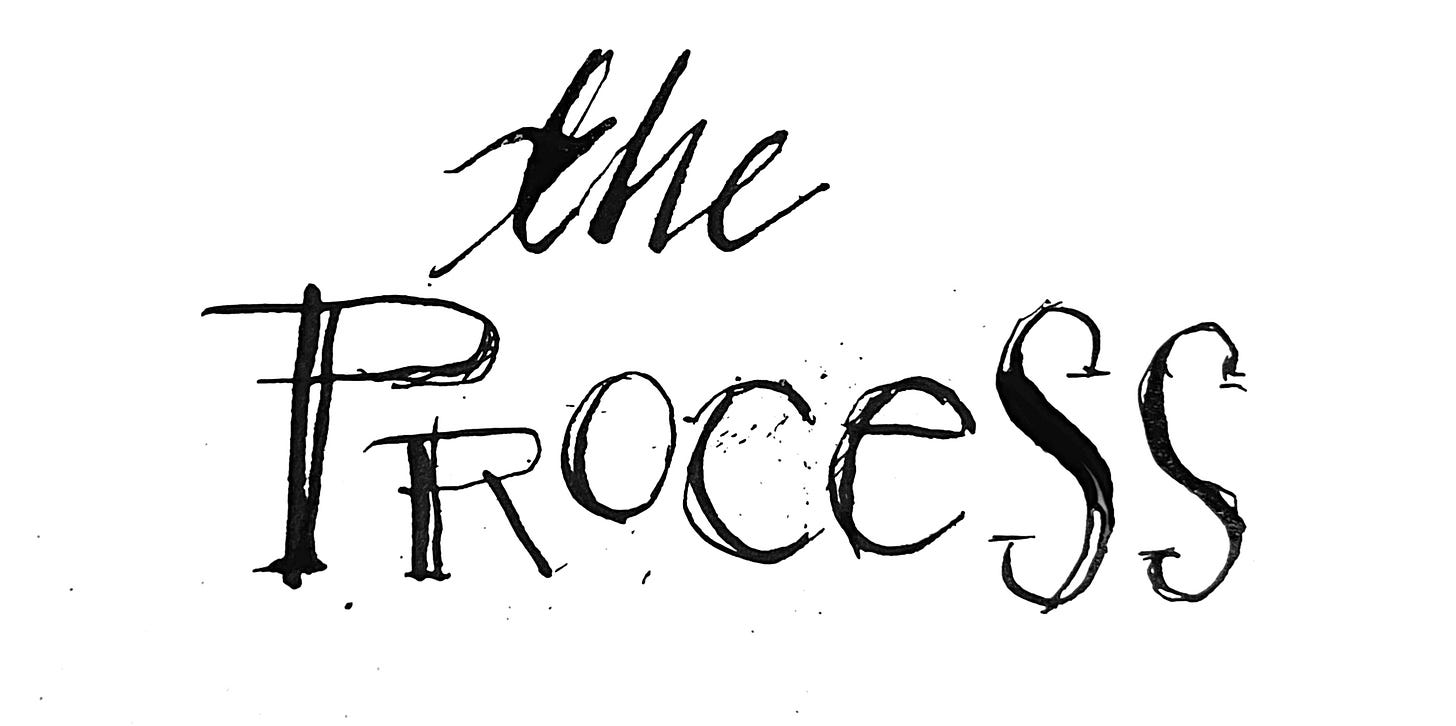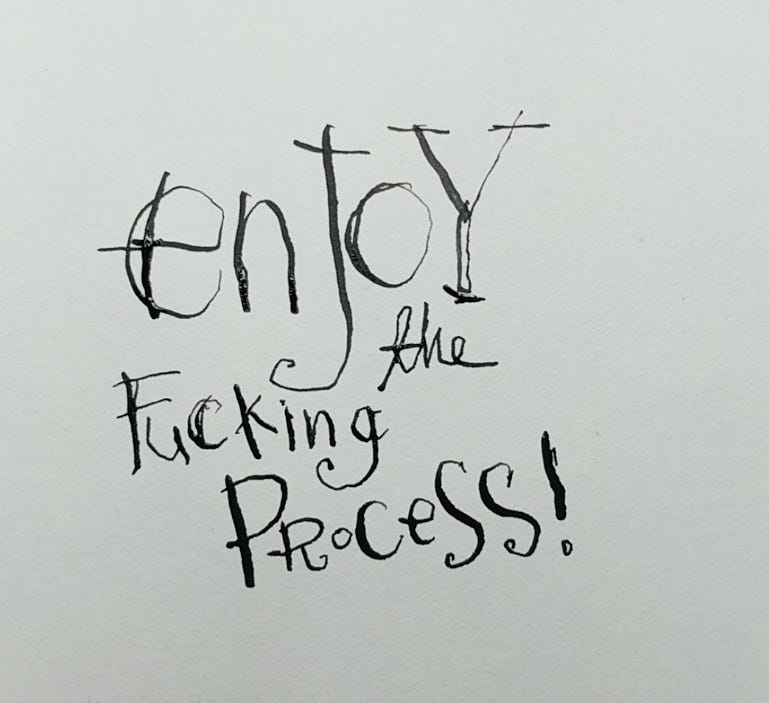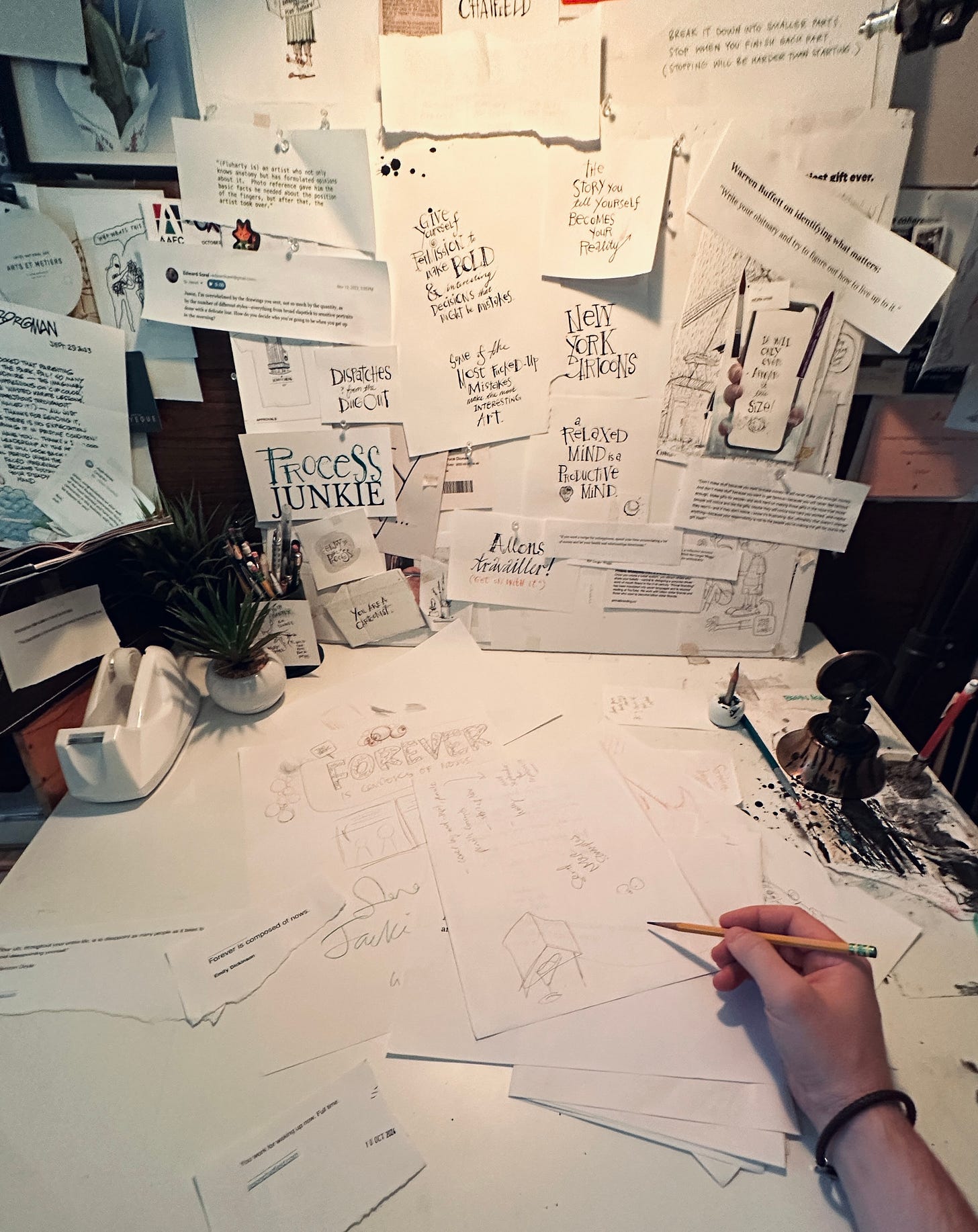"The end of a melody is not its goal."
AI might feel magical in its frictionlessness, but (human) writing—like walking—is valuable because of the friction:
"The end of a melody is not its goal."
~ Philosopher & writer Friedrich Nietzsche on enjoying the process.1
A lot of you wrote to me after reading my essay on using AI in your creative process— then again after I lamented the lazy use of AI Art Generators for a major brand campaign that has littered the New York Subway. It’s a topic that animates the creative community in a lot of different directions, and it’s only getting more animated with new models popping up every week.
One thing that struck me was that throughout all of it, there is a thread that keeps returning again and again, and it is the reason I started this newsletter:
The thing that brings people back to the value of something is the work that went into it—the friction between conception and completion— not the quality of the output. The reason you’ll pay $4000 for a hand-crafted piece of bespoke wooden furniture over a $200 mass-produced robotic pre-fab IKEA table is because it’s unique. It’s something that took artisanship and skill to make.
Am I saying mass-produced furniture lacks value? No. But when creation becomes automated, the human intentionality - the care and attention in crafting each unique piece - gets stripped from the process. Even if the automated version achieves technical perfection, it misses the inherent value of human craftsmanship.
Bill Ahrens, one of the only people on the planet who can hand-pinstripe a car, is a great example of why you might pay more for a car he’s decorated over something that was done using a machine. Does it make sense? Probably not. But it’s the difference between humans creating unique things in the world and robots mass-producing things in a factory.
The ever-intrepid
wrote today about the use of DeepSeek, China’s market-rattling new LLM, which seems to be as good, if not better, than the US LLM offerings including ChatGPT and Claude. By the end of the deep dive (which I highly recommend you read), she arrives here:After hearing the hype, I decided to test DeepSeek myself, dumping in notes for a post I’m writing on chatbots and oral culture. My expectations were low: LLM outputs tend to carry an unmistakable robotic sheen. But for the first time ever, I watched an AI generate readable—even rhythmic and engaging—prose from my pile of fragments.
I was stunned.
For a few hours, I wondered if I should put my own sweat into the essay at all. Then, as if a sign from the gods, Rayne fisher-quann’s latest essay hit my inbox. AI might feel magical in its frictionlessness, but (human) writing—like walking—is valuable because of the friction:
Sometimes it’s tiring or slow, sometimes it’s boring or pointless [...] When you choose to walk, you choose not to pursue immediate gratification or even comfort but simply to expand the number of things that might happen to you. Walking invests in the potentiality of your experience with almost no promise of tangible reward at all, which is something like being alive.
The scenic route! The love of the game! Of course, I remembered, recalling one of my own old posts:
That’s the human difference—not the final output, but the spark of creation. The fact that you start bad and get good later, the work of figuring out where you’re going while still on the way there.
I know I may sound like a broken record when I write here, but it’s because in a world that is adopting these ever-more intelligent AI tools, we can’t forget the reason we do the things we do in the first place.
Keep reading with a 7-day free trial
Subscribe to Process Junkie to keep reading this post and get 7 days of free access to the full post archives.








